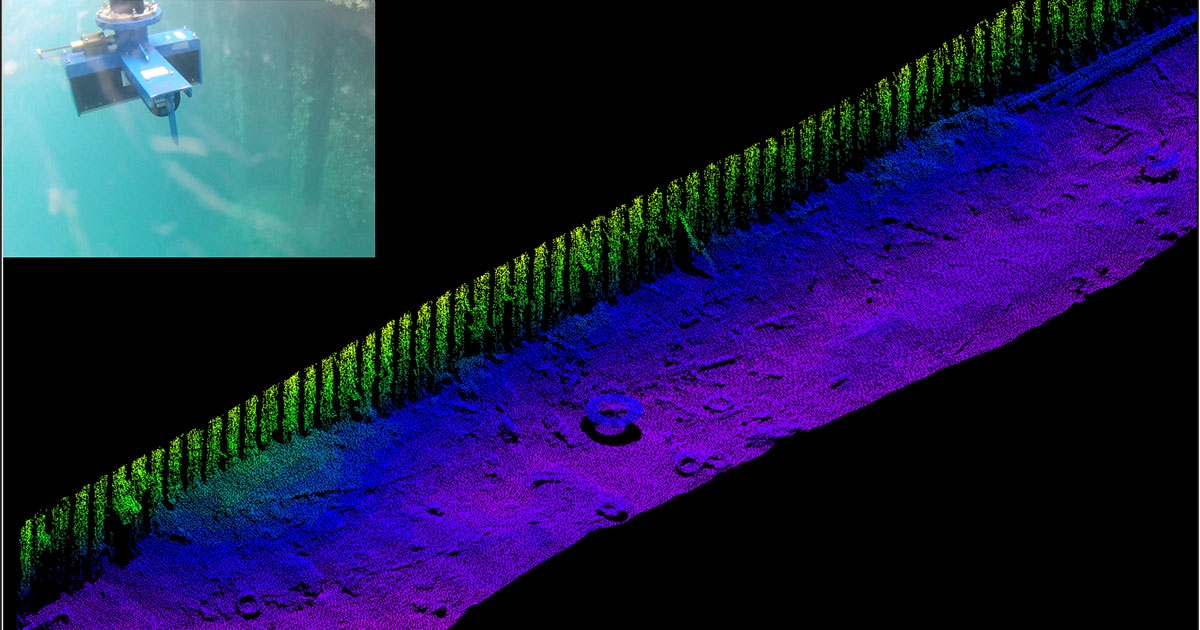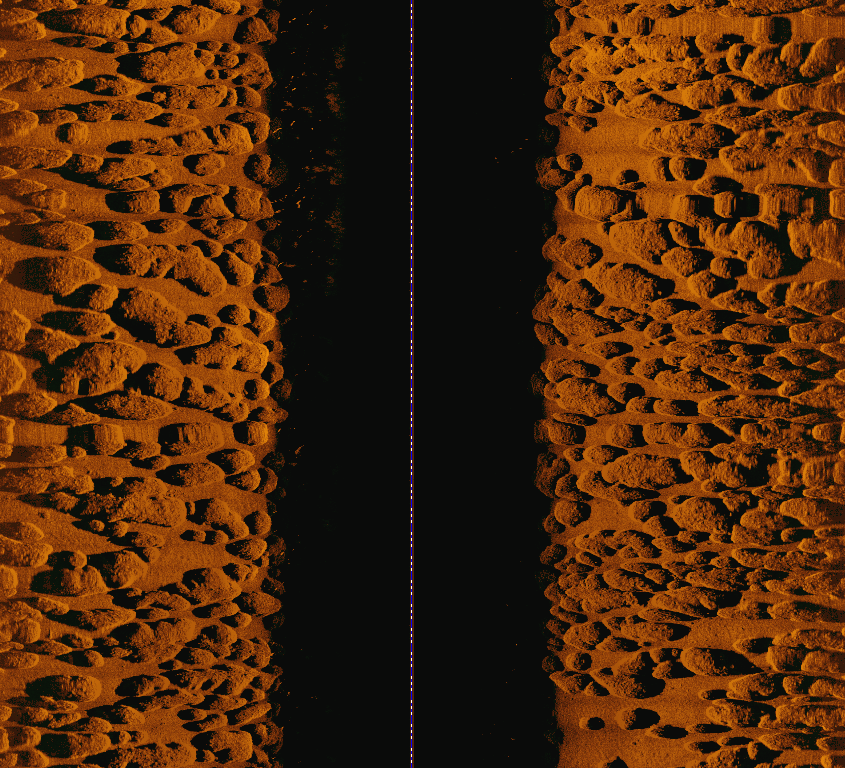
CSA Enhances Geophysical Toolkit with New Mapping Technologies
In its ongoing efforts to invest in the latest marine technologies and support clients with an expanding catalog of cutting-edge survey equipment, CSA Ocean Sciences Inc. (CSA) recently acquired four new state-of-the-art instruments to further enhance the company’s geophysical survey work capabilities.
The first of the new acquisitions is an EdgeTech 4205 Tri-Frequency Side-Scan Sonar, a versatile motion tolerant sonar system that can be operated in shallow or deep water for detecting and imaging objects on the seafloor. The 4205 employs compressed high-intensity radiated pulse (CHIRP) technology that provides very high-resolution imagery (Image 2).
The 4205’s tri-frequency feature gives CSA survey teams the option to simultaneously operate any two of the three available frequencies. This allows for longer range operations with the 230/540 kHz frequency combination but can be readily configured to higher 540/850 kHz frequency to allow for faster survey speeds or even higher resolution. CSA’s 4205 is already in regular use in the field.
The second new addition to CSA’s equipment catalog is an R2Sonic 2024 Multibeam Echosounder. Multibeam echosounders are typically used to map the seafloor, and the R2Sonic 2024 is touted as the first-of-its-kind broadband-wideband high resolution multibeam system, offering unprecedented versatility and performance. It has a particularly high resolution capability and can be operated at a range of frequencies (0.3° × 0.6° at 700 kHz; 0.45° × 0.9° at 450 kHz; 1° × 2° at 200 kHz). This system is also depth rated, and can be operated from a remotely operated vehicle (ROV) or autonomous underwater vehicle (AUV) to depths of 4,000 m. The R2Sonic 2024 is also already active on several important infrastructure projects and has provided clients some sharp imagery and accurate bathymetric measurements (Image 1).

CSA also recently acquired an Applanix Position and Orientation Systems for Marine Vessels (POS MV) OceanMaster system. This unit is an integral component for collecting accurate hydrographic survey data as it corrects for vessel motion by providing accurate attitude, heading, heave, position, and velocity data. The system maintains positioning accuracy under the most demanding conditions, regardless of vessel dynamics. The POS MV OceanMaster System is designed for use with multibeam sonar systems, enabling adherence to International Hydrographic Organization (IHO) survey standards on sonar swath widths greater than 75° under all dynamic conditions.
Finally, CSA added an AML Oceanographic 3 Sound Velocity Profiler (SVP) to its equipment catalog. An SVP is typically deployed from the survey vessel to capture a profile of the sound velocity throughout the water column while taking into account environmental parameters such as temperature, conductivity, and pressure, which affect the speed of sound in water. Accurate measurements of sound speed allow accurate measurements of bathymetry when mapping the seafloor. These measurements can be directly imported into the multibeam’s acquisition software to correct for sound speed over the course of a survey, resulting in accurate bathymetry data and an overall better product for CSA’s clients.
To find out more about CSA multidisciplinary marine survey services or our comprehensive portfolio of marine equipment and instrumentation.
Corporate Headquarters
8502 SW Kansas Ave.
Stuart, FL 34997
Recent Blogs
- Supporting the Realization of Sustainable Energy at the Caribbean Sustainable Energy Conference 2024 Jun 24, 2024
- CSA Provides Planning and Field Support for First Carbon Sequestration Ocean Experiments by Gigablue® May 16, 2024
- PSO Reports Prove Fruitful for Environmental Impact Assessments Apr 15, 2024

